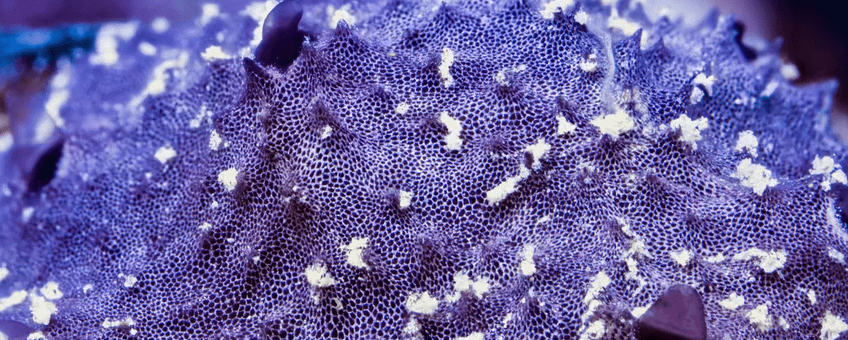
Sponges sneeze waste
Institute for Biodiversity and Ecosystem Dynamics (IBED)Dating back over 650 million years ago, sponges are among the oldest animals on the planet. They may come across as simple creatures, but sponges fulfil a crucial role in many underwater ecosystems. They feed by pumping water through a network of in- and outflow channels in their bodies and filter up to thousands of litres of seawater every day. By perfecting this process the sponge is able to tap into a food source that is inaccessible to most other sea creatures: dissolved organic matter.
Surprising behaviour
After feeding on the dissolved organic matter the sponge produces a mucus-like waste carrier. "It was expected that the waste is released with the outflowing water through their outflow pores," Kornder explains. To study this theory, the researchers took specimens of purple tube sponges and placed them in an aquarium to collect the mucus. They also placed a camera to film a timelapse of the sponge surface.
When analyzing the video footage the team was very surprised, Kornder shares: "Every three to eight hours, sponges contracted and then relaxed their surface tissues. At first we thought our focus was temporarily off, but we quickly realized the animals were ‘sneezing.’ The footage showed that with each sneeze, the collected mucus is released and the sponge is left with a clean surface." Sponge sneezing has been described before and was generally thought of as a way for the sponge to regulate water flow. The timelapses also showed that the mucus was continuously streamed out of the inflow openings, not the outflow openings, and slowly transported along distinct paths towards central collection points on the surfaces of the sponges.
While diving in the Caribbean oceans, the researchers saw many small critters feeding off the energy-rich mucus on the sponges. The sponge benefits the entire ecosystem by using the energy from the dissolved organic matter in the water and turning it into a source of food to enter the food chain.
Time-lapse footage of the Indo-Pacific sponge Chelonaplysilla sp. (Source: Daniel Stoupin)
A long sneeze
"A sponge sneeze is not exactly the same as a human sneeze, because a sponge sneeze lasts around half an hour," says Kornder. "But they are nonetheless comparable, because both for sponges and humans, sneezing is a mechanism to get rid of waste."
These type of behaviors show the incredible flexibility of sponges to adapt to their environment that have allowed them to thrive for over 650 million years. The team plans to continue studying sponge sneezing: "By combining electron microscopy with studying sponge tissue, we want to investigate the underlying mechanism," Kornder says. They will also include more sponge species in the study.
Time-lapse of the massive tube sponge Aplysina archeri sneezing off particulate waste. (Source: Footage by Niklas Kornder, edited by Daniel Stoupin)
More information
- The article Sponges sneeze mucus to shed particulate waste from their seawater inlet pores appeared in the journal Current Biology. It is written by Niklas Kornder, Yuki Esser, Daniel Stoupin, Sally Leys, Benjamin Mueller, Mark Vermeij, Jef Huisman en Jasper de Goeij
Text: IBED
Photo: Daniel Stoupin
Film: Daniel Stoupin and Niklas Kornder, Kornder et al.
